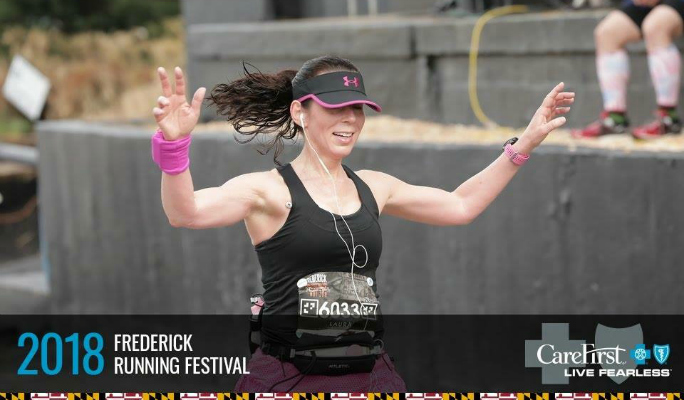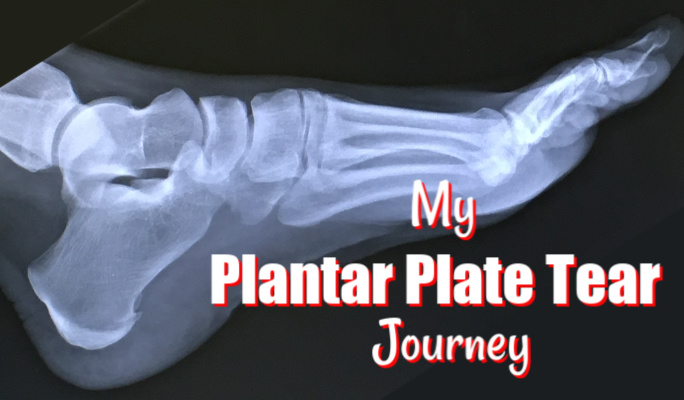You’ve gotten off the couch, logged your first miles, and conquered your first 5K. You quickly become addicted to running. Where you used to say things like, ” I only run if someone is chasing me,” you are now asking, “When is the next race?!” After a while, a mere 5 kilometers cannot sustain you, so you start upping the ante. You register for your first 5 miler, or 10K, or you truly go big and shoot for a half-marathon. Sure, some show-offs like to jump right in to a full (not something endorsed by us here at Joyful Miles), but most gradually get there. “How,” you ask? Well, everyone does it differently.
A quick google search of “fill-in-the-distance training programs” will reveal thousands of different programs (along with an insane amount of cosmetic surgery options). Regardless of which one you choose (and seriously, just bookmark joyfulmiles.com if you haven’t already…for the training, not the cosmetic help), the theme is the same: you need to increase distance during training runs.
 10. Have A GPS Tracker
10. Have A GPS Tracker
There are thousands of available apps and gadgets out there to help track your distance, and I’m not going to list them all here. I am, however, going to highlight what to look for in a good tracker based off of the one I use, and have used since day 1: Map My Run. Full disclosure: Joyful Miles is in no way affiliated with Map My Run, although if they are looking for advertising space, we can talk. I really despise wearing too much on a run, so wearing anything on my wrist is out. I always run with my iPhone tucked in my pocket, so having an app on my phone is a no-brainer. I also am always listening to something, whether it be music, a podcast or an audio book. Map My Run has a feature where you hear each mile as you complete it, also giving you your time and your splits. This is huge  (uuuuuuge! as the Donald would say) for helping maintain your pace. It also makes it easier to share your workouts to social media (just make sure you’re using #joyfulmiles or #joyfulmoments). You also have access to a live map, so if you get lost while experimenting with a new route, you are set. Which reminds me…..
(uuuuuuge! as the Donald would say) for helping maintain your pace. It also makes it easier to share your workouts to social media (just make sure you’re using #joyfulmiles or #joyfulmoments). You also have access to a live map, so if you get lost while experimenting with a new route, you are set. Which reminds me…..
9. Prepare A Route
I have always been fortunate with having a couple of very good running routes available to me that I can easily adjust to whatever distance I want to run on a given day. Not everyone is so lucky. So you might find yourself having to travel to find a good route. Whether you are running right out of your front door, or driving to a starting point, one thing to keep in mind is: know where you are going. This means a lot of things. You don’t want to get lost, but if you do you will have your handy GPS tracker to get you back on track. You also want to avoid routes that cross a lot of busy intersections (these can slow you up and throw off your pacing). You want it to be safe, so sidewalks are key (or at least avoid narrow, winding, poorly lit roads). Bottom line: know what you are getting into.
8. Walking is O.K.

Once you cross over from walker to full-fledged runner, you immediately think that walking is weak. Don’t! A lot of people utilize a run/walk method (made popular by runDisney trainer and Joyful Miles heart throb, Jeff Galloway) when it comes to running. Also, if you are going from averaging 3 miles to all of a sudden doubling that, just walking the distance is a tremendous help with mentally and physically preparing yourself for what that feels like. Seriously, want to run a marathon? Go walk 26.2 miles, then we can talk!
7. You Don’t Need To Do The Full Distance
I admit, this one is a mouthful, but it’s very simple. If you are training for a half-marathon, it isn’t necessary to run 13.1 miles during a training run. The key is to get close. When I was training for my first full, I never sniffed 26.2 (closest I got was 20…once). But think about it, if you do 20, what’s another 6.2, right?! The biggest thing is you are training, and consistent training is what truly matters.
6. It’s Not All About Long Runs
This is one instance where “size doesn’t matter” isn’t a lie. Once you have your heart set on a longer race, it is easy to want to do nothing but long runs. After all, I’m training for a marathon, I can’t be bothered with a measly few miles! Wrong! Wrong! Wrong! The key is to have one long run balanced by one or two shorter runs during the week. Again, regardless of which training program you are using, most will adhere to this sort of structure. Also, running too many miles during training will likely have you burnt out by race day, or worse, injured. Which is why as you get closer to race day, you’ll want to scale back on the running (what we call in the business: tapering).
5. Injuries Will Get In The Way
This is a classic case of “When, not If”. Once you start running, it is inevitable that injuries are going to happen. I have a habit of getting hurt right before races. I’ll never forget training for my first runDisney race (Wine and Dine Half-Marathon) and I rolled my ankle a month before the race. The key is to know what you can train through, and what you can’t. A rolled ankle will require a few days off most likely, while shin-splints are something you can push through (you might just need to drink more water). If you aren’t sure, please consult a real doctor and not your favorite blogger, but don’t let it defeat you. Injuries will heal if we allow them to. What you don’t want is to turn that injury into something more severe that will sideline you much longer, or, dare I say, end your running lifestyle.
4. Hydration Gets Trickier
It’s easy to run a few miles holding a water bottle. That same water bottle is not going to get you very far when going for much higher distances. So how do you stay hydrated? I’ve toyed with hydration belts, which I am not enjoying as much anymore. I might try a Camelbak, but I might as well be Luke Skywalker running with Yoda on his back. Again, to point to my earlier comment, I don’t like running with too much weighing me down. My route is an out-and-back, so one of the things I will do is run with a couple of big bottles of water and stash them a mile or two out. That way I have some water to look forward to on my way back. I will also keep a debit card with me since I pass a ton of stores along the way that I can duck into and buy some. You could also do a shorter loop, that way you can just go inside your house for a refill. Just keep in mind, the longer you run, the more you sweat, thus the need to re-hydrate, and you aren’t going to have thousands of volunteers handing you cups of water along the way (well, unless you have some seriously generous friends and family).
3. Nutrition Becomes Essential
When you ran your first race, you probably focused more on your pre/post race food requirements more than you did while you were out there. Once you start adding distance you will need to experiment with different types of food to keep you going, and training is the time to do so. I like GU’s, beans and even protein bars. I have experimented with loads more that did not sit well with me. Even with the ones I like, certain flavors don’t work for me. The other thing to consider is, how are you transporting all of this? Again, I hate carrying too much, so running while carrying a picnic basket, with Tupperware strapped all over me, while pushing a cooler is a bad idea (unless that cooler is full of beer). This is the time to test out various belts or packs to store your goods. However, keep that trusty debit card at the ready, and have some stores you can grab a quick snack on the go. Some might even accept Apple Pay, so all I need is my iPhone.
2. Where’s The Potty?
Race day is generally not a concern. There should be plenty of port-a-potties at the Start/Finish, as well as along the course. On one of my most recent runs, I had the stark realization that if I keep my run less than 6 miles, I do not pass a single business that I can go in and do, well my business. Outside of knocking on some stranger’s door and hoping they allow me in, or risking public indecency, and having to register as a sex offender (I don’t think the cops will buy that I have Uromysatisis, yes a Seinfeld reference), by just going out in the open, I wouldn’t have any options. Having options is doubly important whilst experimenting with above said nutrition, as some will cause very adverse reactions where having a porcelain bowl at the ready is going to be essential. You could just go. Worked well for Uta Pippig!
1b. Find Support
Training for long distances can be very lonely, which can also be a blessing. However, it is not going to be easy, and you will need help to keep you going. Try and find a local running group to help keep those training runs fun. If running in a group is not your thing, and believe me, I’m with you, reach out to a virtual community. That is how we all found each other here at Joyful Miles. You will need accountability to stay on target with your training program, there is no way around it. Don’t know where to start? Shameless plug time: connect to us and let us help you on your journey.
1a. Reward Yourself

You’re pushing yourself to new heights you never though imaginable! You need to celebrate these achievements! When you finish your training run, have a massage, soak in a bath, order that dessert, or have a beer or three (I swear, I’m not an alcoholic)! Training is hard, and can suck most of the time. Have something fun to dangle in front of yourself to get you to the end.
I could actually keep going, but I’ve taken enough liberties for one week. It’s your turn! We want to hear what things you are doing to up your mileage. What distance are you tackling? How can we help? Just don’t knock on my door expecting to use my bathroom…















